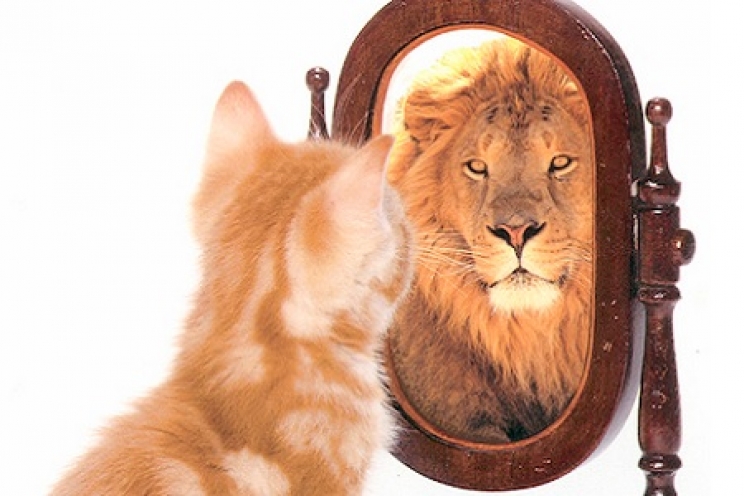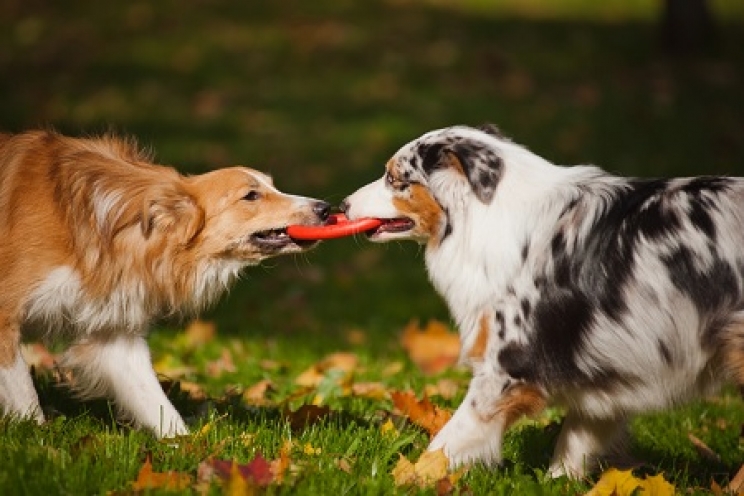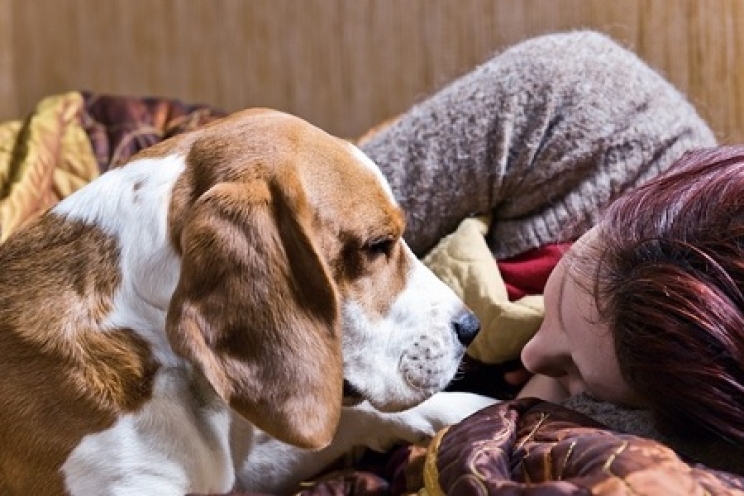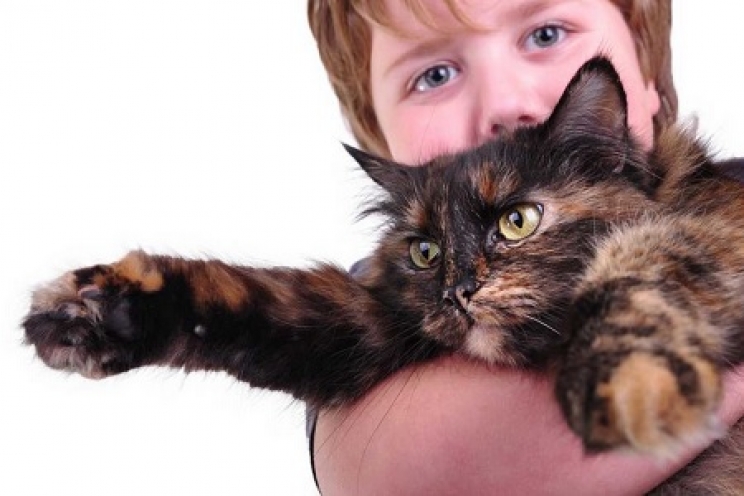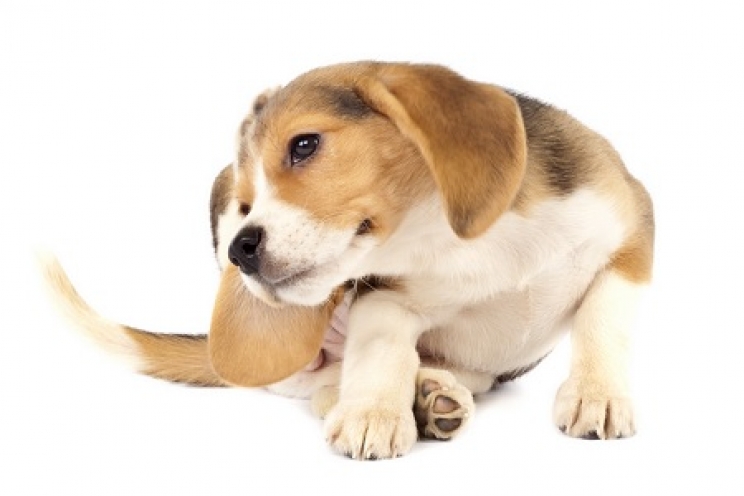The long list of measures in favour of our four-legged friends continues, also as regards to the behaviour to be taken on the streets. In 2011, in fact, the Highway Code was updated with a fundamental paragraph, which obliges anyone who causes an accident against a dog or cat to give assistance.
The question arises automatically every time we watch the numerous videos of dogs and cats fighting, playing or running away from their own image reflected in the mirror. What do animals actually see every time they look at each other? Are they able to recognize themselves? The response of ethologists is quite clear.
Dogs and cats are part of the large category of animals that is unable to develop visual self-recognition. This means that their brain does not have the ability to understand who the image reflected in a mirror belongs to, unlike other animals, such as dolphins, magpies, elephants and great apes, such as orangutans, chimpanzees and gorillas.
We can compare this to the cognitive development of children, who, according to the most founded theories, would learn the ability to visually recognize themselves only starting from 18 months of age.
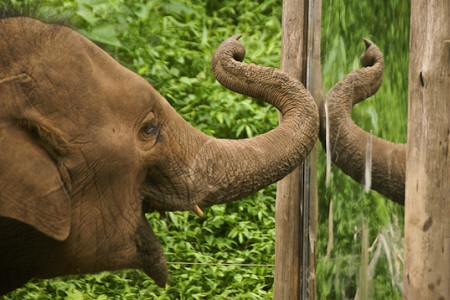
According to modern ethology, as expressed by Dr. Diana Reiss, even for animals, as for people, self-recognition requires a series of well-defined steps. The first of these is the so-called "Groucho phase", during which the animal begins to move slowly and easily to understand if the reflected image is able to follow its gestures.
Animals that have the ability to recognize themselves in the mirror might be elephants and dolphins that have proven to be able to position themselves in front of the mirror, and reflect some specific parts of the body, such as the inside the mouth.
During an experiment, in particular, the animals were marked with a red X on the body. Only a few species could identify it, turning around so that it was visible in the mirror. Indeed, during the same study the elephants proved to be able to even indicate the X with the trunk on their body.
In contrast, dogs and cats did not show the same result. What emerged, rather, is that the puppies behave as if the reflected image belonged to another animal, with which to explore, fight or play. Very similar reactions to those of a child.
However, if on the one hand dogs and cats do not have this ability, they know very well how to compensate for this lack. Their sense of smell is in fact much more developed than ours and many other animals, so they simply prefer to rely on their nose to recognize themselves and others. In essence, for cats and dogs, the smell represents the identification card of an individual.
This was revealed by an all-Italian study conducted by a team of ethologists from the University of Pisa: Elisabetta Palagi, Velia Nicotra and Giada Cordoni. The result of the research was published on December 2015 in the prestigious British magazine Royal Society Open Science and quickly travelled around the world.
The concept of "emotional contagion" represents a very simple form of communication that belongs to the sphere of empathy, a term by which represents the ability to identify and understand the moods of other individuals. According to what emerged from the study, "emotional contagion can be related to facial mimicry, a rapid and automatic response (less than 1 second) in which individuals tend to involuntarily imitate the expressions of others".
Emotional contagion and the imitation of facial mimicry are not necessarily associated, as Dr. Palagi explains, but they could also occur independently to each other. This ability, which is not so frequent in humans, would be found in some animals, such as monkeys and recently in dogs.
The research was conducted in August 2012, observing a group of dogs intent on playing in a public park in Palermo, filming everything for about 3 hours a day. The owners were asked not to interfere in any way with their dogs, allowing each game session to start and end independently, except in the event of an attempted assault.
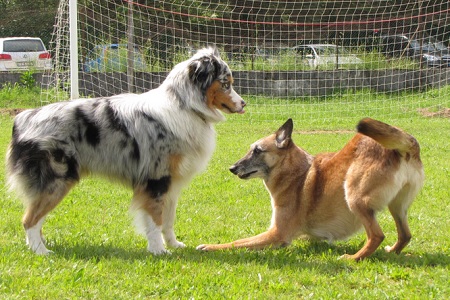
In the course of the research, two important aspects were taken as a reference: facial expression and posture. Not surprisingly, in fact, the typical attitudes of the dog during the game are precisely the expression of the relaxed face, with the mouth open, and the bow gesture. However, other playful behaviours such as biting or jumping were not overlooked. During each session, the researchers took note of the identity of each subject and the game patterns put in place (duration, type of relationship established with the other animal, sequence of events).
At the end of the observation, it was found that the dogs are able to imitate the facial mimicry of the other animals in an extremely rapid manner (just one second), immediately after observing the two typical attitudes of the game (open and relaxed mouth, bow). On the contrary, the "jump" and "bite" signals are not able to stimulate an equally rapid reaction.
Another important fact that emerged concerns the social relationship between individuals. In fact, the entire group of animals was divided into three categories - friends, acquaintances and strangers - based on the frequency of social interactions. It emerged, therefore, that facial mimicry is evoked in a more efficient and lasting way especially among dogs with a stronger social relationship, that is, between friends and acquaintances.
"In conclusion - as Dr. Palagi states - the results showed the presence of rapid mimicry in dogs, the involvement of mimicry in sharing the intention to play and the social modulation of this phenomenon. All these aspects contribute to the idea that it is possible to identify a link between rapid mimicry and emotional contagion in dogs ".
Furthermore, we must think that the ability to "read" the expressions and moods of others is a typical talent of social individuals. Therefore, we can say that dogs are getting closer and closer to the evolutionary passage that brings them in all respects to man's own behaviours.
Source: http://rsos.royalsocietypublishing.org/content/2/12/150505
This news will probably not inform of anything new for all the people who already live with a dog and know how empathetic these animals are. In fact, most owners recognize dogs as a great gift for being able to perceive their moods, behaving in a way that alleviates sadness, tensions, fear and other negative emotions.
However, this has only been a "simple" perception common to many people. Today, however, it has become a certainty from a scientific point of view, thanks to a study published in the journal "Biology Letters". British and Brazilian experts from the University of Lincoln and Sao Paulo have in fact verified that dogs are able to "read" the emotions painted on the faces of people and other dogs.
According to professionals, this characteristic is very important for animals, because it helps them understand what the other's real intentions are within society, an aspect ascertained especially in the context of individuals belonging to the same species. No wonder dogs manage to understand each other.
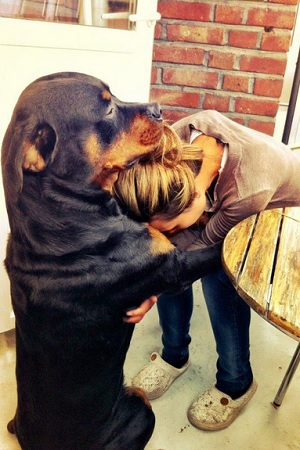
Specifically, to further understand the intentions of another individual, a certain cooperation is necessary between hearing, which perceives sounds, and sight, which instead can help us where words are missing or can even make us suspect that the other individual is lying. These two senses, therefore, work together to make the final information perceived more complete and robust.
As far as animals are concerned, so far only a few primates have shown that they know how to connect the facial expressions of other subjects of their species to the corresponding verses. The ability to understand "heterospecific emotions", ie belonging to different species, apparently also affects our beloved dogs.
During the study, seventeen socialized adult dogs were shown pairs of photographs belonging to men or other dogs in two versions, one correctly coloured and one on the grey scale. Each image depicted the same face or dog, but with different expressions, from happy to angry. Both images were projected simultaneously as soon as a sound was emitted (the barking of a dog if the image was a dog or a human voice in an unknown language if the image was a human) with a positive, neutral or negative tone.
During the projection, the reaction of each of the seventeen dogs to the sight of the images was filmed with a video camera. The result revealed that most dogs stayed longer to look at the photos that matched the right sound (a happy face with a happy sound, or an angry expression with an angry sound). This undoubtedly confirms the hypothesis that dogs are able to understand the meaning of verbal language, especially if associated with facial expressions.
Therefore, the next time your dog crouches next to you because they see you cry, you can be sure that he is really trying to make you feel better.
Let's talk about news that most cat lovers will tend to refuse. In the past days, a new discovery has been announced on the behaviour of felines, according to which cuddles and caresses stress cats.
Everyone knows that felines are rather shy and independent animals, although many owners are ready to swear that cats love cuddling. In reality, this is also true, because numerous studies have managed to show that cats appreciate coexistence with humans and other animals, whilst remaining rather solitary creatures.
This aspect has been significantly expanded in recent days by a study conducted by the British University of Lincoln, the University of Sao Paulo in Brazil and the University of Veterinary Medicine in Austria, sponsored by Ceva Animal Health. The study managed to demonstrate that excessive pampering can stress the cat.
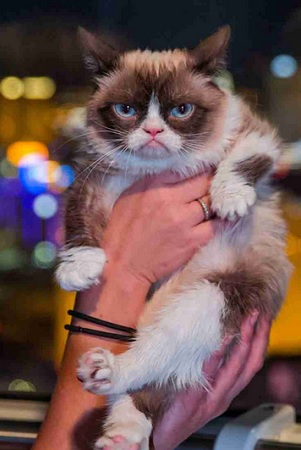
The animals were examined in the home environment alone, in couples and in groups of three or four, precisely evaluating the levels of the stress hormone in each situation.
At the end of the study they noticed that younger cats who lived alone were more stressed than those placed in larger groups.
The reason could be related - as Professor Daniel Mills of the University of Lincoln suggests - to the fact that “although they usually live alone in nature, many cats gather when resources such as food are concentrated in a single area, for example when people feed stray colonies. However, meeting together out of necessity is stressful for them, because they are not naturally sociable animals”.
In any case, this aspect may not be so negative. According to prof. Mills, in fact, "it seems that even if they are not best friends, cats may be able to organize themselves in order to avoid each other without stress".
The key point of the research, however, is certainly related to the owner's pampering. According to what emerged from the study, "cats that tolerate rather than appreciate or despise pampering are the most stressed". Clearly, a cat who finds pampering pleasant will not be negatively affected by the attentions of the owner. On the contrary, a cat that does not like hugs and caresses will be able to respond by subtracting and moving away. These are the most stressed cats, probably because they feel deprived of their personal space.
The basic concept therefore always remains the same: cats do not like excessive attention from humans or other animals, unless they request this themselves. The confirmation of this statement certainly comes from the fact that often, when they decides that the pampering session is enough they push us away.
This was revealed by an article published by National Geographic, which reported the words of Dr. Raelynn Farnsworth of Washington State University's College of Veterinary Medicine, according to which dogs can develop allergies to cats or humans, and vice versa.
In particular, to trigger the allergic reaction would be the residues of dead skin and hair that each of us loses daily, thanks to the natural cell turnover of the skin. These debris enclose very small cells made up of fragments of skin, hair, eyelashes and many other residues released into the environment by us and our four-legged friends. Not surprisingly, even "our" allergies to dogs and cats are triggered by contact with these substances.
Well, it has been shown that the same can be proved in our animals, which can develop various typical symptoms of allergies when they come into contact with these residues. This discovery had already been anticipated in 2005 by a Scottish research, according to which cats can manifest an important form of asthma, due precisely to contact with humans.
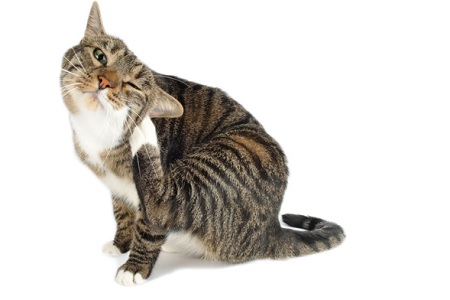
Dr. Farnsworth managed to identify two slightly different types of manifestations in the dog and cat. In dogs, the symptoms are mainly localized at the level of the skin, with inflammation and itching, but sneezing and rhinitis may also appear. In cats, on the other hand, dermatitis accompanied by dandruff and hair loss is more frequent, more evident in the head and neck area.
To understand if dogs or cats suffers from this rare form of allergy, we must first examine the duration of the symptoms. Generally, seasonal allergies (such as pollen allergies, for example) only occur with the appearance of the allergen in the environment (pollen for example, as said before). On the contrary, if the symptoms persist throughout the year, it could be a reaction to some ingredients present in the food or we could even begin to assume that he is allergic to us.
The vet is able to test our animal against various substances. Specifically, it is possible to check whether the dog is allergic to the cat's cellular debris.
But how can we intervene if our four-legged friend is allergic to us? No fear. The vet can safely treat dog and cat allergies, just as humans do. The solution is to treat the animal with sprays or oral drops that contain a minimum amount of allergen (the substance that triggers the allergic reaction) to adapt the immune system to the substance. It will then start to ignore it.
Source: http://news.nationalgeographic.com/2015/04/150411-dogs-cats-allergies-science-pets-animals/










